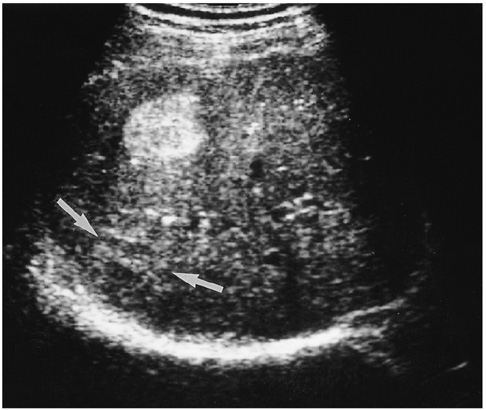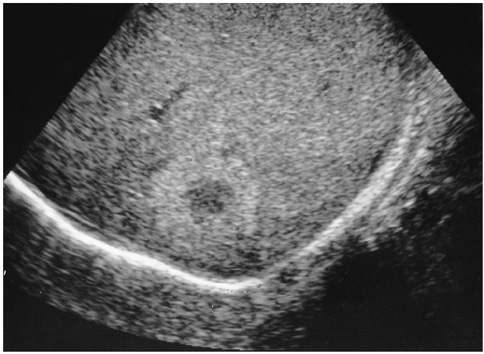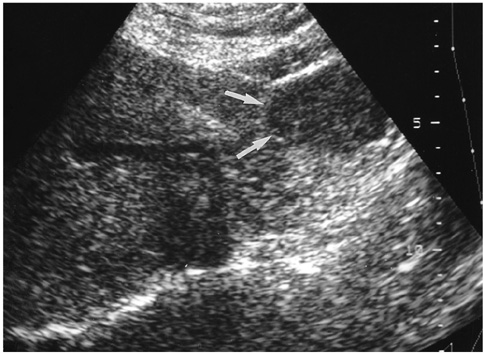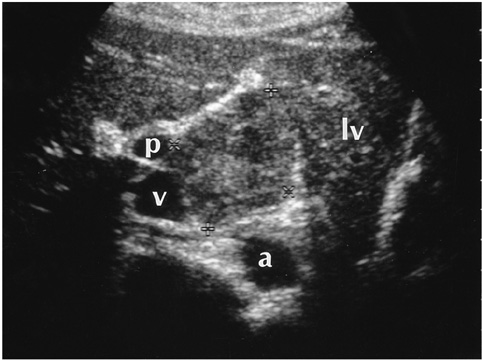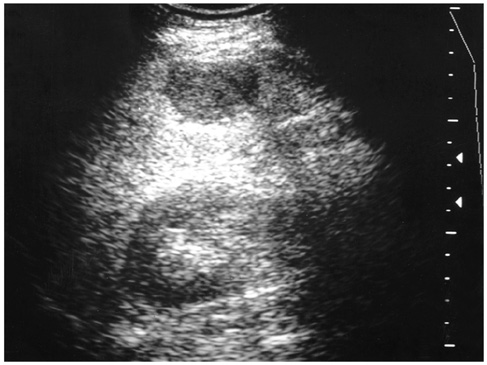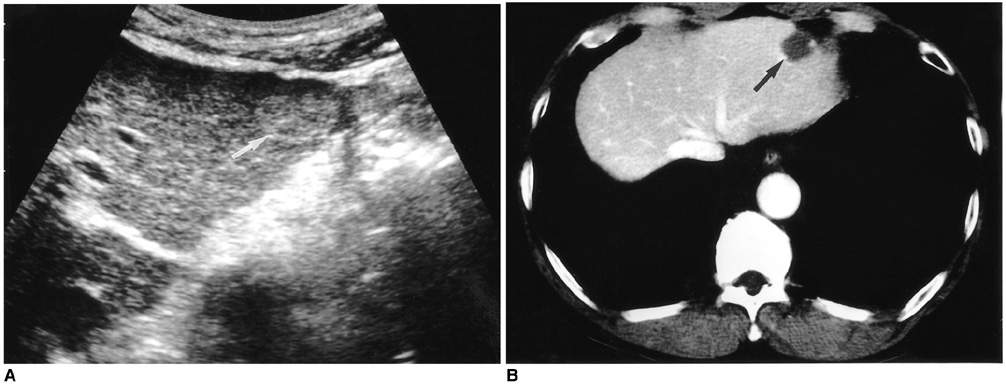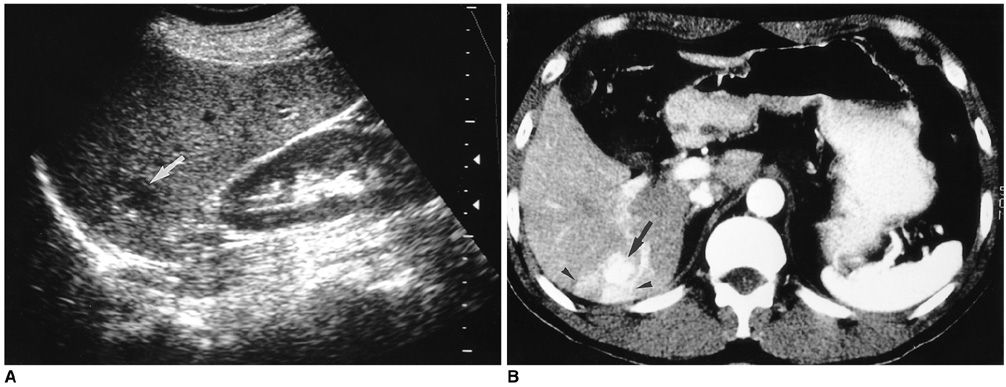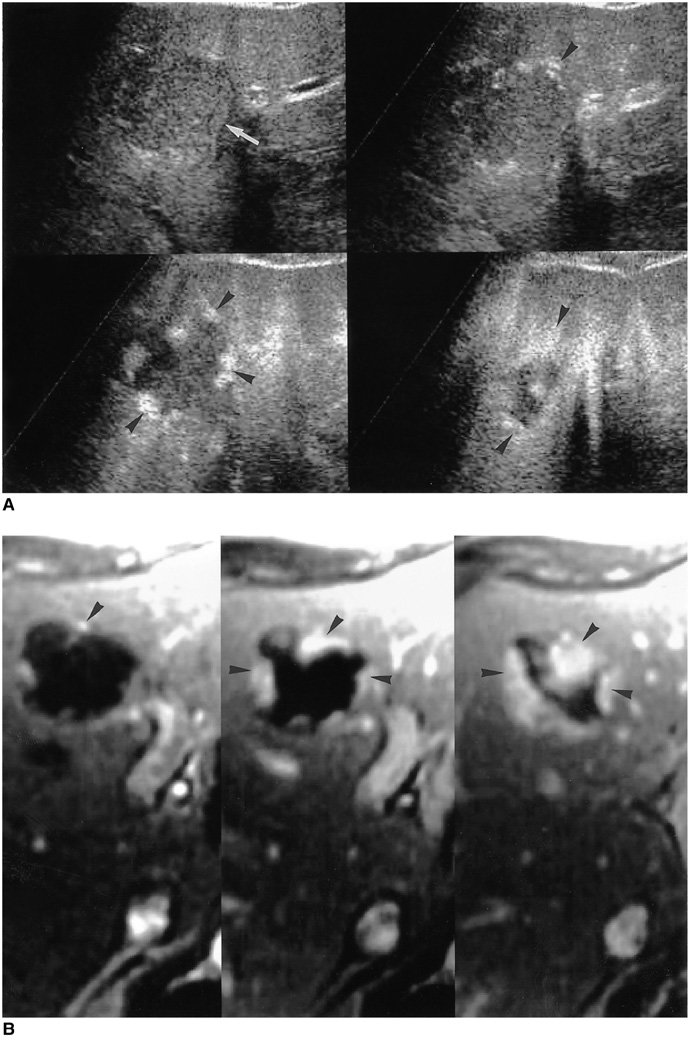Korean J Radiol.
2000 Dec;1(4):191-197. 10.3348/kjr.2000.1.4.191.
Hepatic Hemangiomas: Spectrum of US Appearances on Gray-scale, Power Doppler, and Contrast-Enhanced US
- Affiliations
-
- 1Department of Radiology and the Institute of Radiation Medicine, Seoul National University College of Medicine, Seoul, Korea.
- KMID: 1378944
- DOI: http://doi.org/10.3348/kjr.2000.1.4.191
Abstract
- Because US plays a key role in the initial evaluation of hepatic hemangiomas,knowledge of the entire spectrum of US appearances of these tumors is impor-tant. Most hemangiomas have a distinctive US appearance, and even with those with atypical appearances on conventional gray-scale US, specific diagnoses can be made using pulse-inversion harmonic US with contrast agents. In this essay,we review the spectrum of US appearances of hepatic hemangiomas on conven-tional gray-scale, power Doppler, and pulse-inversion harmonic US with contrast agents.
Keyword
MeSH Terms
Figure
Reference
-
1. Mirk P, Rubaltelli L, Bazzocchi M, et al. Ultrasonographic patterns in hepatic hemangiomas. J Clin Ultrasound. 1982. 10:373–378.2. Taboury J, Porcel A, Tubiana JM, Monnier JP. Cavernous hemangiomas of the liver studied by ultrasound: enhancement posterior to a hyperechoic mass as a sign of hypervascularity. Radiology. 1983. 149:781–785.3. Friedman AC, Frazier S, Hendrix TM, Ros PR. Friedman AC, Dachman AH, editors. Focal disease. Radiology of the liver, biliary tract and pancreas. 1994. St. Louis: Mosby;169–327.4. Gibney RG, Hendin AP, Cooperberg PL. Sonographically detected hepatic hemangiomas: absence of change over time. AJR. 1987. 149:953–957.5. Moody AR, Wilson SR. Atypical hepatic hemangioma: a suggestive sonographic morphology. Radiology. 1993. 188:413–417.6. Marsh JI, Gibney RG, Li DKB. Hepatic hemangioma in the presence of fatty infiltration: an atypical sonographic appearance. Gastrointest Radiol. 1989. 14:262–264.7. Chang J, Han K. Relation of internal echo patterns and hemodynamics by incremental dynamic CT in hepatic cavernous hemangioma. J Korean Radiol Soc. 1993. 29:775–782.8. Yu JS, Kim MJ, Kim KW, et al. Hepatic cavernous hemangioma: sonographic patterns and speed of contrast enhancement on multiphase dynamic MR imaging. AJR. 1998. 171:1021–1025.9. Kim TK, Choi BI, Han JK, Hong HS, Park SH, Moon SK. Hepatic tumors: contrast agent enhancement patterns with pulse-inversion harmonic US. Radiology. 2000. 216:411–417.10. Choi BI, Kim TK, Han JK, Chung JW, Park JH, Han MC. Power versus conventional color Doppler sonography: comparison in the depiction of vasculature in liver tumors. Radiology. 1996. 200:55–58.11. Young LK, Yang WT, Chan KW, Metreweli C. Hepatic hemangiomas: quantitative color power US angiography-facts and fallacies. Radiology. 1998. 207:51–57.12. Kim TK, Han JK, Kim AY, Park SJ, Choi BI. Signal from hepatic hemangiomas on power Doppler US: real or artefactual? Ultrasound in Med and Biol. 1999. 25:1055–1061.13. Lopez-Ben R, Robbin ML, Weber TM, Smith JK, Needleman L, Berland LL. Doppler sonographic enhancement of hepatic hemangiomas and hepatocellular carcinomas after perflenapent emulsion: preliminary study. J Ultrasound Med. 1999. 18:109–116.14. Kim AY, Choi BI, Kim TK, et al. Hepatocellular carcinoma: power Doppler US with a contrast agent-preliminary results. Radiology. 1998. 209:135–140.15. Kim TK, Han JK, Kim AY, Choi BI. Limitations of characterization of hepatic hemangiomas using a sonographic contrast agent (Levovist) and power Doppler ultrasonography. J Ultrasound Med. 1999. 18:737–743.
- Full Text Links
- Actions
-
Cited
- CITED
-
- Close
- Share
- Similar articles
-
- Diagnosis of Acute Appendicitis: Comparison between Gray Scale, Color Doppler and Power Doppler US
- Power Versus Color Doppler Sonography of Focal Hepatic Lesions
- The Use of Contrast-Enhanced Color Doppler Ultrasound in the Differentiation of Retinal Detachment from Vitreous Membrane
- Hepatic Hemangioma with Hypoechoic Halo Accompanied by Arterioportal Shunt
- Radiofrequency Ablation of Liver Cancer: Early Evaluation of Therapeutic Response with Contrast-Enhanced Ultrasonography

